Fajr Decade
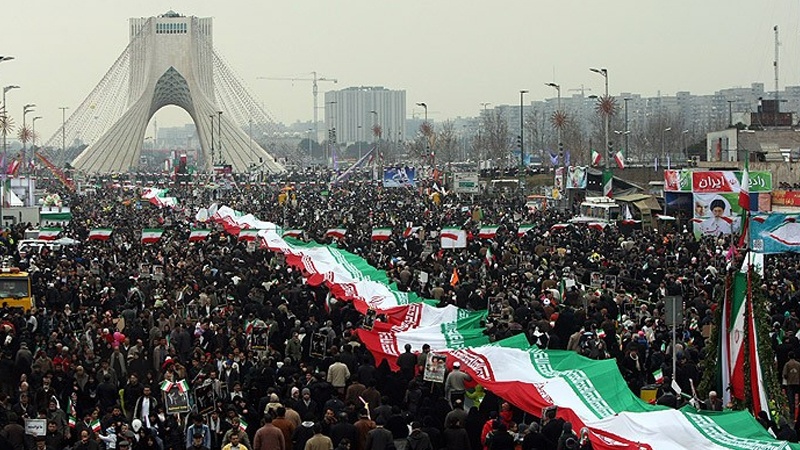
Iran is an Islamic country owes its Islamic dimensions to the great revolution, known as the Iranian Islamic Revolution of 1977 (1357 SH), which done by huge crowd participation of the public, Islamic characters, clerics, students, merchants, opposing political parties, intellectuals and etc., who expressed their dissatisfaction with the situation of the Imperial regime in many different ways as clashes, general strikes, street demonstrations and protests, from a long time ago.
The main root of Islamic Republic of Iran can be found in the 1953 coup (known in Iran as 28 Mordad coup) and its concurrent events; the cause of developing the Islamic movement can be counted as follows: absolute attachment to the West, specially to US, kings not authorized to make important decisions, corrupt and irreligious kings who tried to deceive the young, ignorance of the people's vote, confrontation with liberalism, pervasiveness of oppression and injustice supported by the government, scientific, industrial undeveloped and the lack of amenities.
Following this anti-royal revolution on February 11th (22nd of Bahman), the struggle of the Muslim people finally worked to the fore and the kingdom of Iran was overthrown and the setting for the coming of the Islamic Republic under the leadership of the Shiite cleric, Seyyed Rouhollah Khomeini, was provided.
The 10 days between February 1st (Bahman 12th) and February 11th (Bahman 22nd) of 1977 (1357) are called Fajr Decade; which Imam Khomeini entered to Iran after the fifteenth years of exile, and the greatest welcome in history took place from him in Tehran, and eventually the Pahlavi regime was extinct after more than 50 years of oppression and tyranny on February 23rd. After the triumph of revolution, a referendum was held on creating Islamic Republic in 28 July 1979; it was approved by 98.2% of eligible citizens.
On the occasion of this great victory, Iranian nation decorates the cities, streets and different areas with different decorative objects, flowers, the picture of Imam Khomeini and Sayyed Ali Khamenei, the supreme leader of Iran, and the flag of Islamic Republic of Iran during the Fajr decade every year. Iranians also celebrate this decade with performing revolutionary songs, holding various festivals as Fajr (the most extensive film, theatre and music festival in Iran), holding different ceremonies in governmental organizations and centers across the country. Schools start at 9:33 in 1 February, on the occasion of entering Imam Khomeini to Iran. Moreover, in February 11th, an official holiday, people hold a glorious rally in different cities, to celebrate this triumph.
Nowruz
Haft-Seen table 4.jpg)
Nowruz (literally translated New Day) is one of the oldest celebrations in ancient Persia, which is held vigorously in the first day of spring marking the beginning of the Iranian calendar (21 March). Nowruz festivities celebrate the beginning of rebirth of nature and lasts for 13 consecutive days. Celebrated by millions of people in Afghanistan, Azerbaijan, Tajikstan, India, Kyrgyzstan, Pakistan, Uzbekistan and Turkey, Nowruz is inscribed on UNESCO’s Intangible Cultural Heritage List. The first universal festival of Nowruz was held in 2010 (March 27), in Tehran and the city introduced as the "Nowruz Secretariat". Nowruz includes the official holidays in some countries and in Iran the first four days are considered the official holidays but it continues to the 13th day in some organizations. Nowruz is celebrated practicing certain rituals such as spring cleaning, sprouting wheat or mung beans, buying new clothes, cooking local foods and baking sweets.
Families usually gather around the Haft-Seen table to celebrate the precise moment the Earth finished its annual journey around the Sun to celebrate the first day of spring. The Haft-Seen table contains seven edible items that their names begin with a letter in the Persian alphabet which is equivalent to “S” in English. It usually includes Seeb (apple), Sabze (green sprouts), Serke (vinegar), Samanoo (a delicacy made from wheat sprouts), Senjed (the dried fruit of the oleaster tree), Sumac, and Seer (garlic).
You may see a holy book, mirror (sign of sincerity), gold fish (sign of livelihood), candles (sign of light and bright), decorated eggs (sign of rebirth), and Divan-e Hafez on the table. Sabzi Polo with fried fish is served as the main course of most of Iranian families on Nowruz day.
Chaharshanbe Soori
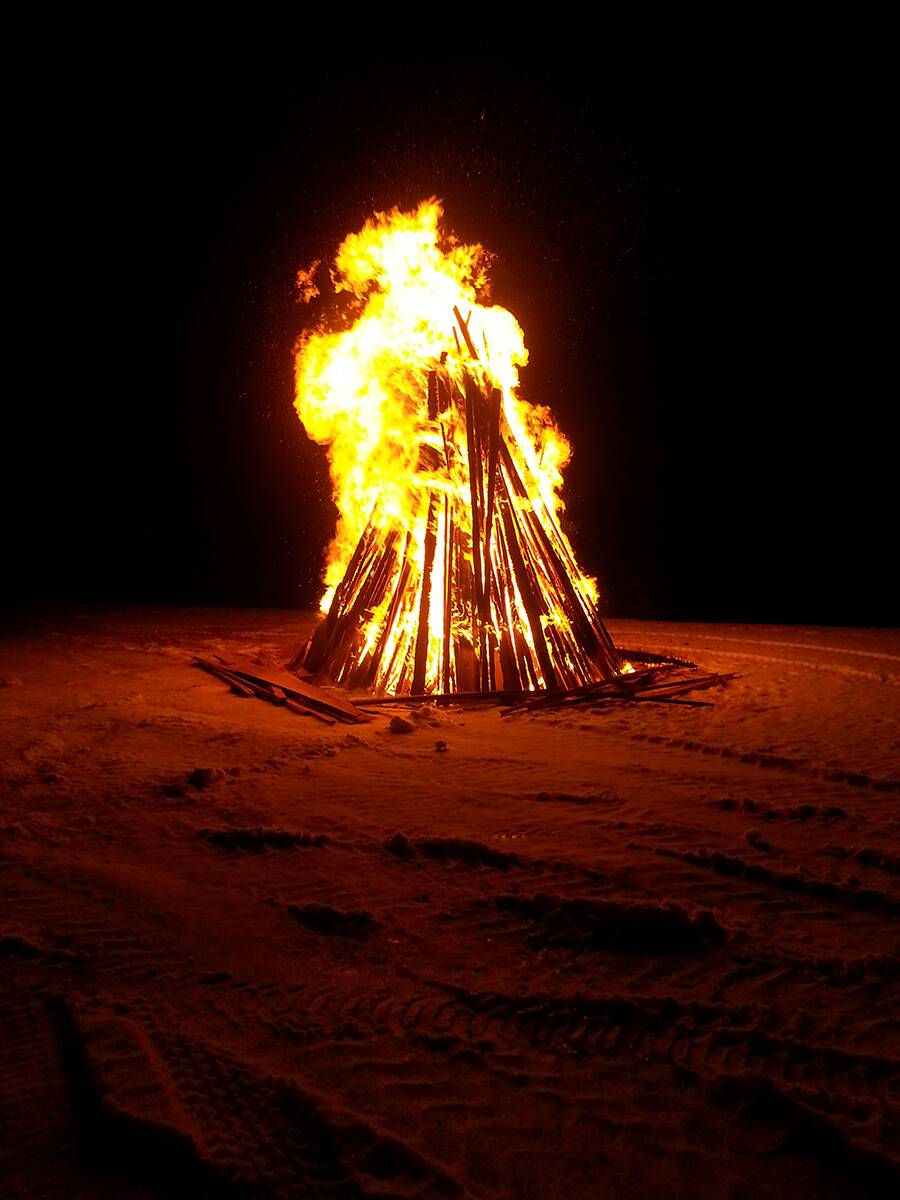
Chaharshanbe Soori is a particular and important common ritual of spring festival among Iranian tribes, which is held before Nowruz (New Year) in Iranian culture. Chaharshanbe Soori is one of the Nowruz rituals which it dates back to Iranian ancient rituals in which the fire is the most important element in all regions and also it is common in different forms among Aryan tribes.Chaharshanbe Soori has been constituted from 2 words one of them is Chaharshanbe (Wednesday) "The last Wednesday of a year" and Soori "means red". Chaharshanbe soori is held in different regions by different methods due to their particular customs but fire is the main and shared element of Chaharshanbe Soori in all regions. Fire is one of the classical elements and the only element which is pure and symbol of lighting, purity, freshness, life, health and at finally it is the most obvious symbol of God on the land. Chaharshanbe Soori is held with setting fire and jump over it in the night of the last Wednesday of each year (Thursday’s night). Today, Chaharshanbe Soori ceremony is both dangerous and exciting.
Sizdah-Be-Dar (Nature day)
_0_0_0.jpg)
The 13th day of Farvardin has been named as Sizdah-Be-Dar or Nature Day in Iranian culture that is an ancient ritual and also it is one of the most important common and shared customs among Iranian tribes. This day is an official holiday in Iran. Iranians annually celebrate this day by coming the new year and spring season; spending 12 days of Nowruz holidays with picnicking outdoors in nature; Sizdah- Be-Dar ceremony is hold with many various methods and customs in different regions of the country. The 13 days of Nowruz holidays will end after this day and everything will return to routine form.
There are various analysis on the different reasons of Sizdah-Be-Dar genesis. The number of 13 was an unlucky number in mythological culture of ancient Iranian and many other nations; therefore, they believed that an unpleasant thing occurs in this day and because of that, they spend it outdoors, even for a short time and celebrate this day to save themselves from disasters caused by 13.
Today, no one accepts 13 as an unlucky number and people mostly believe that it is just a superstition. According to another belief, the 13th day of each month in ancient Iranian thirty-day calendar was related to the Tir or Tishtar angel (Rain Star) and it is a blessed and happy day.
Different ceremonies based on each region’s culture are common in Sizdah-Be-Dar such as game, sport, local match, wearing traditional clothes, playing music, local and group dance, eating the lettuce with Sekanjebin (one of the oldest Iranian drink), cooking local foods, different types of Ash and the other customs of Iranian tribes. The other part of Sizdah-Be-Dar rituals are originated from some mythological beliefs and cultures like "eavesdrop on conversations", Fortune-telling, the humorous custom of "Sizdah-Be-Dar’s lie" or knotting the green and throwing away the green which are common customs among Iranian in this day. Today, the ancient and original form of Sizdah –Be –Dar has been changed like many other Iranian rituals.
Yalda Night
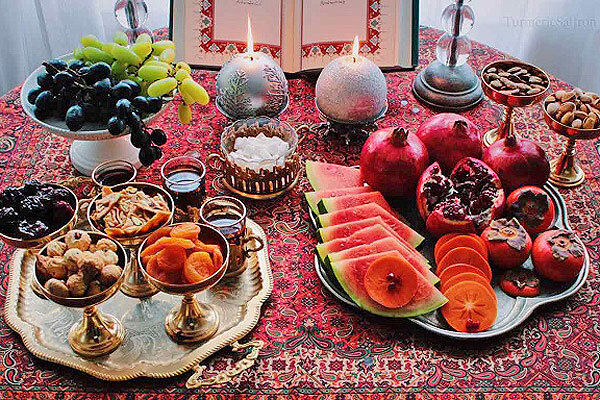
Yalda Night (Chelleh night) is one of the most beautiful and longest nights of the year in Iran where the ceremonies and celebrations are held with different ways based on the special traditions of each region.
The word Yalda means birth, and the Yalda Night is one of the traditional ceremonies in Iran, which is held by Iranian coming together the family members and relatives in different parts of Iran.
The Iranians are celebrated the Yalda Night (the first day of winter), the time between the sunset of the last day of the autumn and the sunrise of the first day of winter which is coincided to the longest and the darkest night of the year in the northern hemisphere of the earth. Various ceremonies are common in different regions and cities of Iran in this night such as eating special fruits i watermelon and pomegranates, nuts and sweets, cooking local food, reading Hafiz, horoscope, reading poetry, reading the Shahnameh, reading stories, etc., each of which has a symbolic aspect and they are the signs of Blessing, health, abundance and happiness.
Sadeh Festival
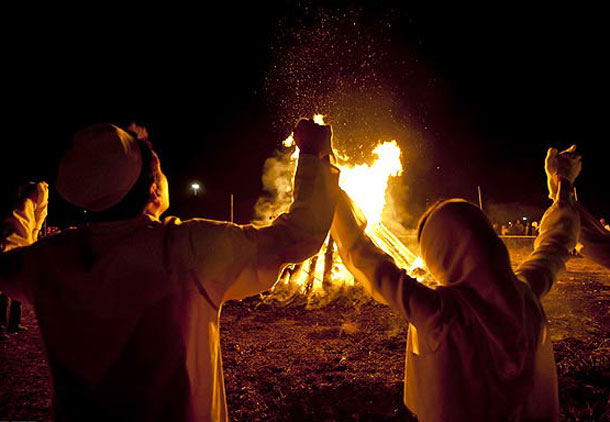
The "Sadeh festival" is the largest fire celebration and one of the oldest known traditions in ancient Persia, which is celebrated forty days after the Yalda Night as thanksgiving from God's blessings by Zoroastrians.
This celebration is a sign of the importance of light, fire and energy in life, which begins with setting the fire on the top of mountains and roofs of houses near the sunset of the tenth of Bahman. The Sadeh festival is one of the great Iranian celebrations with no religious aspect and all the stories related to it are non-religious. This celebration would has been held by the kings, emirs and ordinary people from the pre-Islamic period, the Islamic era, until the late Khwarazmian era and the Mongol conquest and has continued to this day. There have been various narratives and opinions about the naming of the Sadeh and setting the fire. The most famous and largest celebrations of the Sadeh festival are held in Isfahan in Mardavij era when he celebrated the Sadeh and was killed at the end of the celebration by his opponents in 323 AH.
Sadeh celebration is held in many cities and villages of Iran and by Zoroastrians residing in other countries with the gathering and the presence of Zoroastrian, Muslim, and Persian Jews and etc., in one place, with the establishment of a large fire outside the city and the implementation of the different programs. Ancient Persians was on this belief that the Zoroastrians are gathered around a great fire and this fire bring warmth and light, and keeps fresh the hope for the triumph of light on darkness in the hearts. People gather together in the collecting of firewood from the days before the celebration. Today, According to the custom of this magnificent celebration in many regions of Iran despite the passing of thousands of years since the first Sadeh, no significant changes have been made in this celebration.
Kharman Celebration
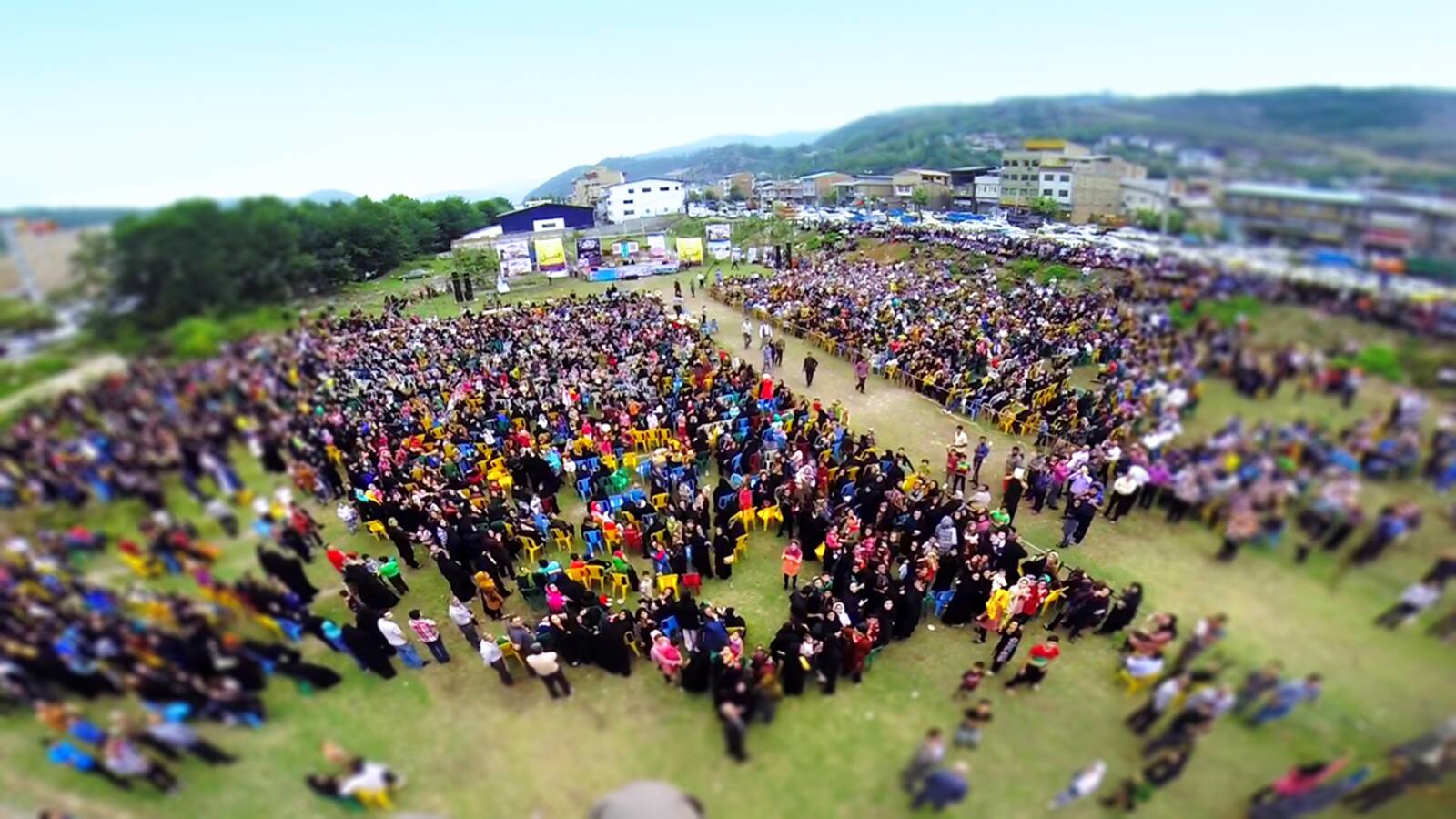
Agriculture is one of the sacred jobs that people in different regions have been busy with since past times. The celebration of Kharman (harvest) is a traditional, olden and lasting ceremony in northern Iran which is held at the end of the agricultural season after a period of planting and harvesting the products of wheat and rice paddy to eliminate farm workers fatigue in spring and summer in Mazandaran, Gilan and Golestan provinces since Qajar era.
This celebration is a symbol of the gratitude, friendship and cooperation of the people and a way to preserve and revive ancient traditions and native culture. Agricultural products harvesting by basic tools was very hard work so that it was being done in several stages by individuals and by using livestock such as horses and etc., in the past time. Traditional ceremony of Kharman (Harvesting) is done through symbolic performance of harvesting with traditional agricultural tools and implements.